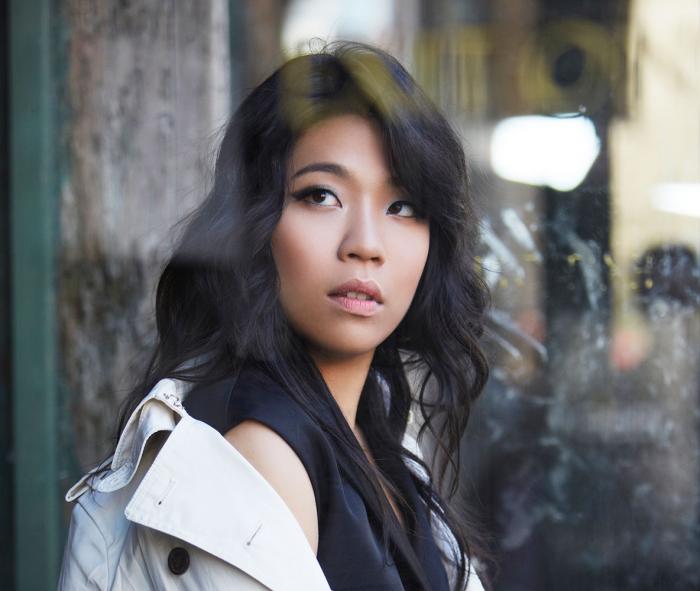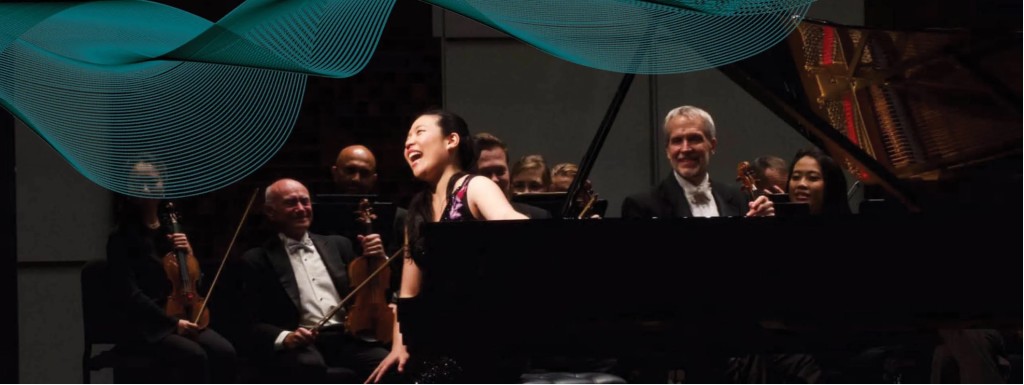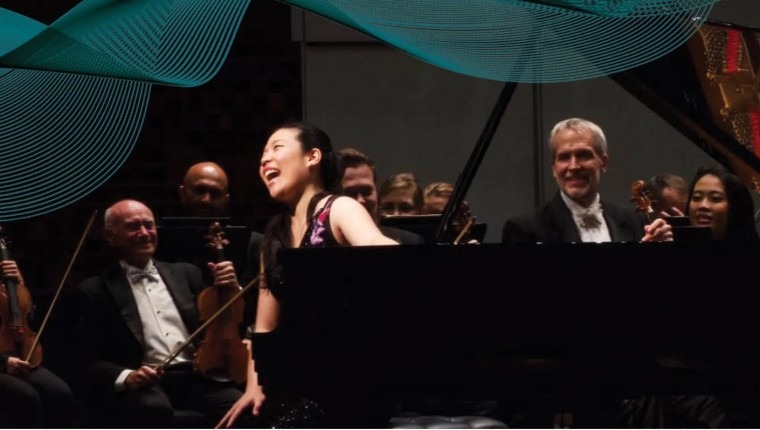By Kurt Loft
. . .
Afterthoughts – Spellbound
by pianist Joyce Yang in Rachmaninoff 3
. . .
If you had a front-row seat for Joyce Yang’s performance of Rachmaninoff’s Piano Concerto No. 3 with the Florida Orchestra last Sunday at the Straz Center, you witnessed a bit of magic. Or, more accurately, you were swept up by an artist’s ability to concentrate on a magical level.
This was the last of six concerts featuring the South Korean-born pianist in the Second and Third concertos over two weekends, a mini festival under the baton of Florida Orchestra Music Director Michael Francis. Will it be remembered as the highlight of the season? Arguably so, if we include the exuberance of Nielsen’s Inextinguishable Symphony, which opened the program with dueling sets of timpani.
The venue made these two works all the more intense. The Broadway musical Chicago occupied the matinee slot in Morsani Hall, so the orchestra appeared in the smaller Ferguson Hall next door, which delivered a tauter experience. It also allowed us to feel Yang breathing every note as she attacked the keyboard over 40 relentless minutes.

Listening to a recording of the Rach 3 is one thing; experiencing such laser focus in person was visceral. The work is commonly known as the Mount Everest of piano concertos because of its technical demands: the wide intervals (Rachmaninoff had huge hands), complex polyrhythms and crossovers, and the soloist in a forward-leaning – and unforgiving – cadenza mode.
But the real mountain here was not just the physical agility of Yang’s ascent, but the sheer will of her mind, and the degree of focus needed to reach the summit. This isn’t a work that can simply be memorized and rubber stamped for each performance. For every 10 minutes of the score, Yang said she invests more than 100 hours of practice.
“I’m always brainstorming new ways to improve my Rachmaninoff,’’ said the Juilliard graduate, who is married to a bassist in the Alabama Symphony. “Most of my practice sessions are spent focusing on small sections, like ‘drilling’ spots where it always gives me trouble and never gets any easier. A week or so before the concert, I start running through the whole concerto, making sure I have enough stamina to get through it more than once.’’
. . .
Rachmaninoff didn’t hold back. The first movement contains an epic improvisation of the keyboard literature, one characterized in the 1996 movie Shine as a “make or break’’ moment for any pianist. The composer offered two choices for this virtuosic segment. One is a crisp, lighter toccata style lasting 59 bars, the other chordal and daunting, clocking in at 75 bars. Yang opted for the latter, known as the Ossia, which means “alternative version.’’
“It’s much more difficult to perform, and has a darker tonality, large, powerful octaves, and a deep, rich sound,’’ she said. “This is an amazing moment for the pianist. It’s a big climb to the top, and when you get there, it doesn’t end there, as the energy only rises and it keeps going until the breaking point. It’s a very exciting moment.’’

Yang’s rubato created a tangible sense of tension and release, and at the height of the cadenza, concertmaster Jeffrey Multer leaned toward the piano clearly amazed, as if hearing the music for the first time. Yang’s virtuosity and bravura were electrifying but refined, never frothy or outside the bounds of artistic integrity.
Although the second and third movements are more linear than the allegro, they explode with equally formidable finger work, the only respite being a return to the principal melody that opened the work. After the finale’s powerful climax, the crowd jumped to its feet as Yang and Francis embraced, elated by the response to the teamwork between soloist and orchestra.
For all its riveting motion and romanticism, Yang said the music must sound connected, cohesive, even if it appears to be on the edge of coming apart.
“It feels like there are so many different entities on stage,’’ she said of the relationship between piano and orchestra. “It feels like I’m having a conversation with the orchestra, tugging and pulling each other, dancing, and even playing tricks on each other … So as a soloist, I need to be very clear when I’m leading, but I also have to be a flexible and sensitive chamber music partner.’’
. . .
Yang returned for an encore, a lyrical arioso by Edvard Grieg, which she hoped, after so much excitement, would make everyone “float out of the hall.’’
And we did.
. . .
. . .
Originally published in the Florida Orchestra blog
. . .



